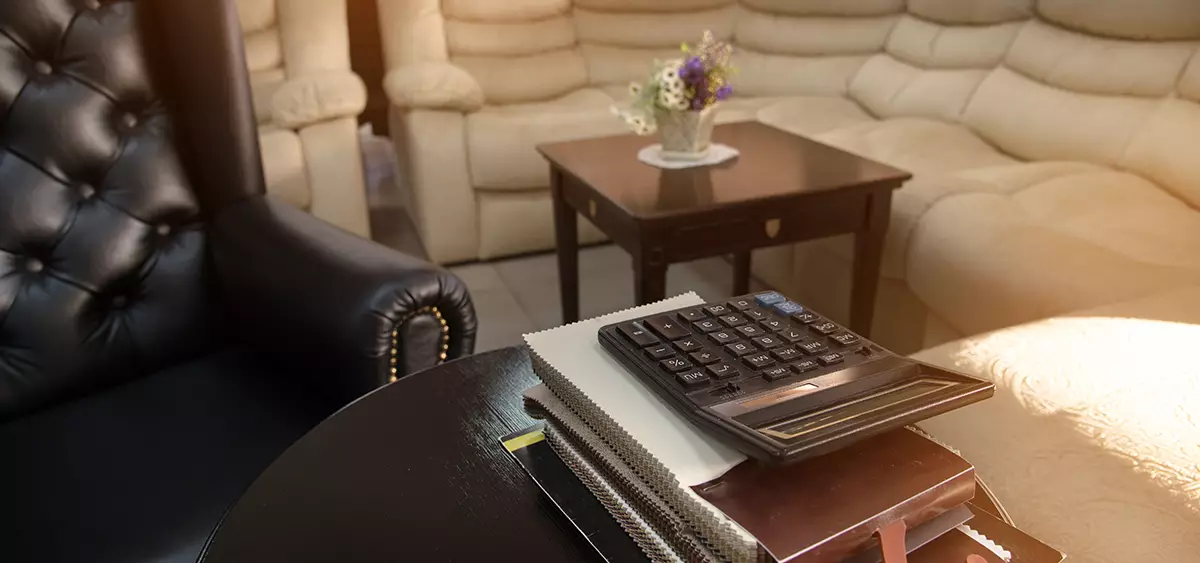Here are some examples to help you understand the basic rules for dividing the family patrimony. The family patrimony is also known as “family property” or “family assets.” The examples have been simplified to make them easier to understand. Family patrimony rules and calculations are very complicated and can be interpreted in different ways. You can consult a family lawyer or notary to learn about your rights in your specific situation.

Example 1
Max and Anne are getting divorced. They own the following property, which they bought while they were married:
Max
Anne
- family home
- half the furniture
- half the furniture
- family car
Value of the property when the divorce was filed
- House: $200,000 ($50,000 left to pay on the mortgage)
- Furniture: $20,000
- Car: $15,000
1. Determine which property is included in the family patrimony:
house, furniture and car
2. Calculate the net value of this property:
- House: $200,000 – $50,000 = $150,000 = net value of house
- Car: $15,000 – $0 (no debts) = $15,000 = net value of car
- Furniture: $20,000 – $0 (no debts) = $20,000 = net value of furniture
3. Decide if there are other amounts to subtract:
In this case, there are no other amounts to subtract.
4. Determine the value to divide based on who owns what property:
Value to divide for Max’s property:
Value to divide for Anne’s property:
Value to divide for house = $150,000
Value to divide for half of furniture ($20,000 / 2) = $10,000
Total value to divide for property belonging to Max ($150,000 + $10,000) = $160,000
Anne is allowed to half of this amount, that is, $160,000 / 2 = $80,000.
Max owes $80,000 to Anne.
Value to divide for car = $15,000
Value to divide for half of furniture ($20,000 / 2) = $10,000
Total value to divide for property belonging to Anne ($15,000 + $10,000) = $25,000
Max is allowed to half of this amount, that is, $25,000 / 2 = $12,500.
Anne owes $12,500 to Max.
Since Max owes $80,000 to Anne and Anne owes $12,500 to Max, Max actually owes her:
$80,000 – $12,500 = $67,500.
Max owes $67,500 to Anne. Anne doesn’t owe Max anything.
5. Decide on a way to pay.
Here are a few examples of how Max can pay the $67,500 he owes Anne:
- Max can pay Anne the $67,500 he owes her in cash.
- Max can give Anne his half of the furniture ($10,000 value) and pay her the remaining $57,500 in cash.
- Max can sell his house and pay Anne $67,500 from the money he gets for the house.
- Max can sell his house to Anne, and then Anne will owe money to Max ($200,000 – $67,500 = $132,500).
Example 2
Max and Anne are getting divorced. They own the following property:
Max
Anne
- family home
- shares in ABC Corporation
- furniture
Value of the property when the divorce was filed
House: $200,000 ($25,000 left to pay on the mortgage)
The family home belonged to Max before he and Anne were married. It was worth $100,000 on the day they were married, and there was $40,000 left to pay on the mortgage.
Furniture: $20,000
Shares in ABC Corporation: $100,000
1. Determine what property is included in the family patrimony:
The house and furniture are family property.
Since the shares in ABC Corporation are not family property, the couple’s matrimonial regime determines what happens to the shares.
2. Calculate the net value of this property:
House: $200,000 – $25,000 = $175,000 = net value of house
Furniture: $20,000 – $0 (no debts) = $20,000 = net value of furniture
3. Decide if there are other amounts to subtract:
There are other amounts to subtract because Max owned the house before he married Anne.
Deductions allowed in this specific case:
Net value of house on day of marriage = $100,000 – $40,000 = $60,000
Increase in value during x (marriage Net value on day of marriage / Gross value on day of marriage)
Increase in value during marriage: $200,000 – $100,000 = $100,000
$100,000 x ($100,000 – $40,000) / $100,000 = $60,000
Subtract the deductions from the net value of the house:
$175,000 (net value of house) – $60,000 (net value of house on day of marriage) – $60,000 (increase in value of house in proportion to value of property at time of marriage) = $55,000 (value to be divided)
4. Determine the value to divide based on who owns what property:
Value to divide for Max’s property:
Value to divide for Anne’s property:
Value to divide for house: $55,000
Anne is allowed to half of this amount, which is $55,000 / 2 = $27,500.
Max owes $27,500 to Anne.
Value to divide for furniture = $20,000
Max is allowed to half of this amount, which is $20,000 / 2 = $10,000.
Anne owes $10,000 to Max.
Since Max owes $27,500 to Anne and Anne owes $10,000 to Max, Max actually owes her:
$27,500 – $10,000 = $17,500
Max owes $17,500 to Anne. Anne doesn’t owe Max anything.
5. Decide on a way to pay.
Here are a few examples of how Max can pay the debt he owes to Anne:
- Max can pay Anne the $17,500 he owes her in cash.
- Max can give Anne $17,500 worth of shares in ABC Corporation.
- Max can sell his house and pay Anne $17,500 from the money he gets for the house.
- Max can sell his house to Anne, and then Anne will owe money to Max ($200,000 – $17,500 = $182,500).





